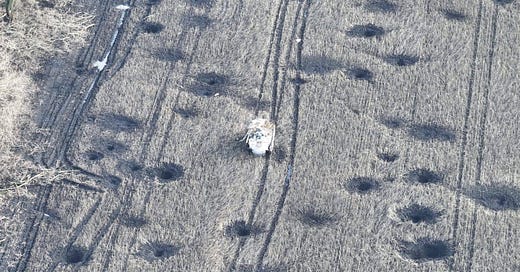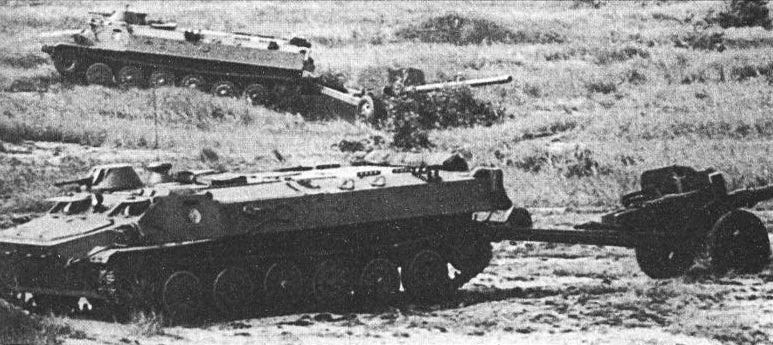Russian Troops Riding in Vans And Getting Massacred by Drones—It's All Part of the Plan
Russian regiments conduct extensive, and costly, reconnaissance by force
It might be shocking to watch Russian troops assault across the no-man’s-land in Ukraine—only to (usually) get maimed or killed by mines, artillery and drones.
Consider the recent skirmishes fought by the Ukrainian Azov Brigade outside Toretsk in eastern Ukraine’s Donetsk Oblast—and by the 110th Mechanized Brigade a little farther south in the same oblast.
In both fights, Russian regiments deployed small sections—a few vehicles carrying a few dozen troops, at most. The troops were ambivalently led and evidently poorly trained. Their rides were civilian all-terrain vehicles and bukhanka vans.
The Russian sections didn’t last long. But that’s all part of the plan, as analysts Jack Watling and Nick Reynolds at the Royal United Services Institute in London noted in a pair of reports from this year and last. According to RUSI, small probes—most of them essentially suicidal—are the first phase for Russian assaults.
“First, they send sections/squads of poorly trained troops, perhaps eight personnel at a time (although some larger attacks consist of up to 30 personnel supported by one or two infantry fighting vehicles),” Watling and Reynolds wrote.
These are ordered to advance towards where they assess Ukrainian positions to be, conducting reconnaissance by drawing fire. If the group encounters resistance, Russian commanders assess where they believe the best lines of approach are, and in particular, where the boundaries between defensive units lie.
If Ukrainian positions are positively identified, sections are persistently sent forward to attack positions, which are further mapped and then targeted with artillery, [first-person-view drones] and UMPK glide bombs. When rotation or disruption of the defense is achieved, Russian units aim to conduct more deliberate assault actions.
Russian assault actions consist of armored vehicles or light mobility vehicles endeavoring to transport troops as close to Ukrainian positions as possible before the infantry rush the positions; battle drills, direct fire control and fire and maneuver are either primitive or absent.
Russian troops that make it into cover will often lie low and await successive waves to follow until a critical mass of troops have entered the defensive positions, at which point they will rush to the defenders.
When you see Russian troops try and fail to bum-rush Ukrainian lines on ATVs or in vans, you’re witnessing a tactical failure but not necessarily an operational one. Russian commanders expect to expend what amount to many small reconnaissance groups in order to facilitate an eventual, wider assault.
It’s costly in lives and equipment, but the Kremlin doesn’t seem to mind, as Watling and Reynolds explained.
The Russian Group of Forces continues to take significant casualties, but is nevertheless growing in size. Operating at greater scale allows the Russian military to take measures that guarantee the integrity of the front line. Units can generally be rotated out of the line once they have taken up to 30 percent casualties—the point at which they are judged to be ineffective—and are then regenerated.
While no large-scale offensive is currently taking place, Russian units are tasked with conducting smaller tactical attacks that at minimum inflict steady losses on Ukraine and allow Russian forces to seize and hold positions. In this way, the Russians are maintaining a consistent pressure on a number of points.
The Kremlin therefore believes that it can sustain the current rate of attrition through 2025.
Read more:
Russia Is Burning Through One Of Its Last Stocks of Old Cold War Vehicles
The 17-ton, eight-person MT-LBu is a Soviet-designed amphibious tractor that is almost always unarmed in its myriad versions, unlike the smaller MT-LB tractor that preceded it into service by a few years. Both vehicles have no more than 10 millimeters of armor—barely enough to stop small-arms fire.






